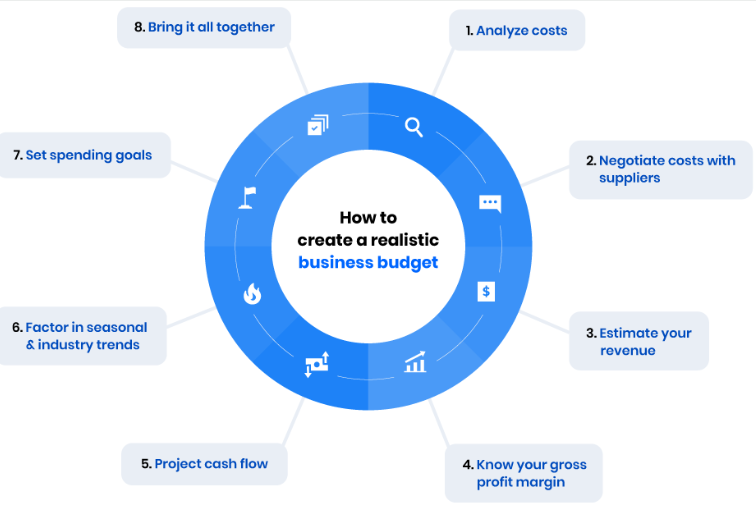Small Business Budgeting: 7 Steps to Stay Profitable
Running a small business is exciting but without a solid budget, it’s easy for costs to spiral and profits to vanish. The good news? You don’t need a finance degree to take control of your money.
Here’s a simple 7-step budgeting guide to keep your business healthy and profitable year-round.
1. Know Your Income Streams
Start by tracking every source of revenue sales, services, subscriptions, and even one-off projects. This helps you understand where your money is coming from and which products or services drive the most profit.
Pro tip: Use accounting software like QuickBooks, FreshBooks, or Wave to automate income tracking.
2. List All Fixed and Variable Expenses
-
Fixed costs: Rent, insurance, software subscriptions.
-
Variable costs: Marketing campaigns, travel, raw materials.
Breaking these down will help you predict future cash flow and spot areas for cost-cutting.
3. Set Profit Goals First
Most owners calculate profit as “whatever’s left over.” Instead, flip the script—decide your target profit first, then build expenses around it.
Example: If you want $50,000 in profit and expect $200,000 in revenue, your total annual expenses should not exceed $150,000.
4. Create a Monthly Cash Flow Plan
Budgeting isn’t just about annual figures—monthly tracking ensures you’re never caught off guard.
Plan for:
-
Seasonal slowdowns
-
Large, infrequent expenses (e.g., tax bills, equipment upgrades)
-
Short-term cash reserves for emergencies
5. Separate Business and Personal Finances
Mixing accounts is a recipe for confusion and potential tax headaches. Keep a dedicated business checking account and credit card for all business transactions.
6. Review and Adjust Regularly
Your budget isn’t set in stone. Review it monthly or quarterly and adjust based on sales trends, market changes, or unexpected costs.
Pro tip: Track budget-to-actual spending to catch problems before they grow.
7. Build a Safety Cushion: Small Business Budgeting: 7 Steps to Stay Profitable
Aim to keep 3–6 months of operating expenses in an emergency fund. This buffer can be a lifesaver during slow seasons, unexpected expenses, or economic downturns.
The Bottom Line on Small Business Budgeting: 7 Steps to Stay Profitable
A budget is more than just a financial document it’s your business’s roadmap to profitability. By following these 7 steps, you’ll not only control costs but also gain the confidence to make smarter business decisions.
Think of your budget as your profit GPS it shows you where you are, where you’re going, and how to get there without running out of fuel.


